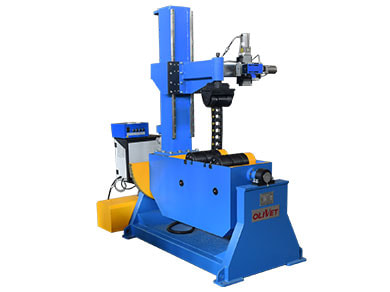Stainless Steel Anti-Magnetic Tools vs. Traditional Magnetic Tools: Which Reigns Supreme?
In the world of tools, the debate between stainless steel anti-magnetic tools and traditional magnetic tools has sparked interest among professionals and DIY enthusiasts alike. Each type offers its own set of advantages and disadvantages, compelling users to consider their specific needs and environments. To determine which reigns supreme, let’s delve into the benefits, limitations, and ideal applications for both types of tools.
Understanding the Materials: A Brief Overview
Before we dive deeper, it’s vital to understand what we mean by “stainless steel” and “magnetic tools”. Stainless steel tools are crafted from a variety of iron alloys mixed with chromium, which makes them less reactive and resistant to rust and corrosion. Meanwhile, traditional magnetic tools typically contain ferromagnetic materials, which have iron, nickel, or cobalt, enabling them to attract other magnetic objects.
This distinction in material not only affects how tools perform in various environments but also how they interact with other materials. This is particularly important in certain industries, such as manufacturing and healthcare.
Advantages of Stainless Steel Anti-Magnetic Tools
One of the most significant advantages of stainless steel tools is their resistance to corrosion and rust. This makes them particularly suitable for environments that are exposed to moisture, such as kitchens or outdoors during inclement weather. Moreover, the durability of stainless steel ensures that these tools can withstand wear and tear over time, providing reliable performance.
Another consideration is the non-magnetic nature of these tools. In settings like MRI rooms in hospitals or specific manufacturing environments, the presence of magnetic fields can interfere with operations. Using stainless steel tools eliminates this risk, ensuring safety and effectiveness in operations where precision is paramount.
Furthermore, stainless steel tools are often easier to clean and maintain. Their smooth surfaces prevent the buildup of grime, and most can be sanitized without fear of deteriorating material—an essential factor in maintaining hygiene standards.
Drawbacks of Stainless Steel Anti-Magnetic Tools
However, stainless steel tools do come with some drawbacks. They are generally more expensive than traditional magnetic tools, owing to the manufacturing processes and materials involved. Additionally, while they do not attract other metals, this can be a disadvantage in certain applications where magnetic pickup is essential for efficiency.
Advantages of Traditional Magnetic Tools
On the other hand, traditional magnetic tools have their own advantages. The most apparent benefit is their ability to attract and hold ferrous materials in place, which can significantly enhance productivity. For instance, in construction projects or mechanical applications, magnetic screwdrivers and wrenches can quickly secure screws and bolts, reducing the time and effort needed for assembly.
Related links:Discover the Benefits of Stainless Steel Anti-Magnetic Tools
Top OEM Electric Screwdrivers for Electronics Export: Buyer’s Guide
How to Choose an OEM Torque Controlled Electric Screwdriver Exporter?
Top OEM Electric Screwdriver Controllers: Boost Efficiency Now!
What factors influence pattern roller OEM purchasing decisions?
Top ODM Brushless Electric Screwdriver Exporter Insights
Microcement Paint Trends to Watch in 2024
Moreover, traditional magnetic tools can be lighter and more versatile compared to their stainless steel counterparts. This can lead to ease of use, especially for work that requires extended periods of handling and maneuvering. They often excel in quick-access situations where speed is more critical than the risk of rust or corrosion.
Drawbacks of Traditional Magnetic Tools
Nevertheless, traditional magnetic tools have their weaknesses. They are susceptible to corrosion, particularly if left in moist environments or not adequately cleaned after use. This aspect can lead to a decrease in tool performance and a shorter lifespan.
Additionally, the magnetic fields generated can interfere in sensitive environments, which is a significant concern for professionals working in healthcare, electronics, or high-precision manufacturing. Users must carefully assess their operational contexts to ensure they’re not jeopardizing integrity or safety.
Choosing the Right Tool for Your Needs
The choice between stainless steel anti-magnetic tools and traditional magnetic tools ultimately depends on your specific needs. If you're working in a moist environment or one laden with magnetic interference, investing in high-quality stainless steel tools may be the way to go. Their resistance to corrosion and safety advantages can significantly enhance your working conditions.
Conversely, if you value speed and efficiency for projects requiring rapid access to ferrous materials, traditional magnetic tools may be more suited to your tasks. Their ability to hold and attract screws or bolts can streamline workflows significantly.
Final Thoughts
In conclusion, both stainless steel anti-magnetic tools and traditional magnetic tools have unique strengths that serve different needs. When selecting the right tool for your project, consider factors such as the environment in which you’ll be working, the type of materials you’ll be dealing with, and your budget. Ultimately, understanding the scope of your tasks will lead you to the most effective choice, ensuring you can work efficiently and effectively every time. Whether you're a weekend warrior or a professional craftsman, the right tools can make all the difference in your success.
Want more information on Stainless Steel Anti Magnetic Tools, Non Sparking Hammer Price, Adjustable Wrench Wholesale? Feel free to contact us.
Related links:Benefits of Magic Roller Paint for Easy Home Makeovers
Transform Your Surfaces: Mastering Ragging Roller Texture Design to Solve Common Pain Points
Automatic Screw Feeder Factory
7 Essential Floor Painting Shoes for Every DIY Enthusiast
Torque Electric Screwdriver for Power Tool Assembly
What are the best rollers for applying putty?
Choosing the Right Electric Jig Saw Manufacturer: Overcoming Common Buyer Pain Points




